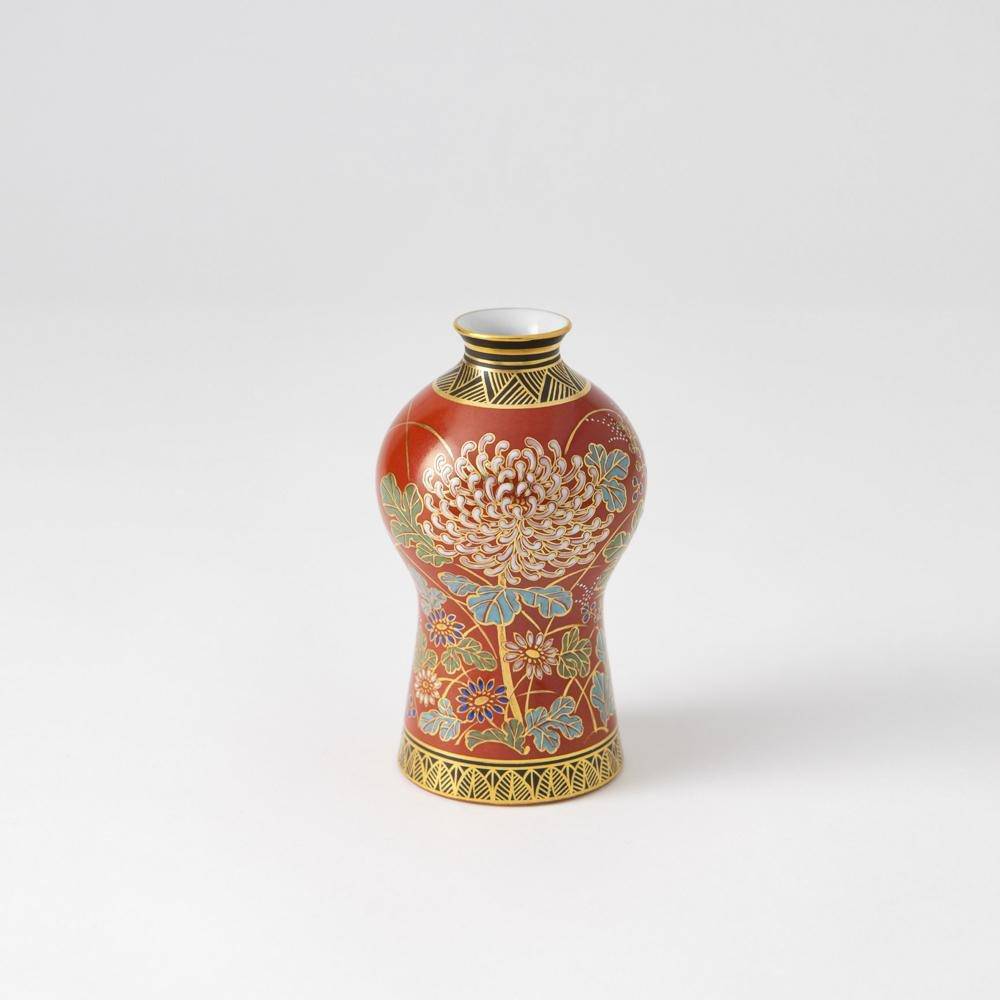









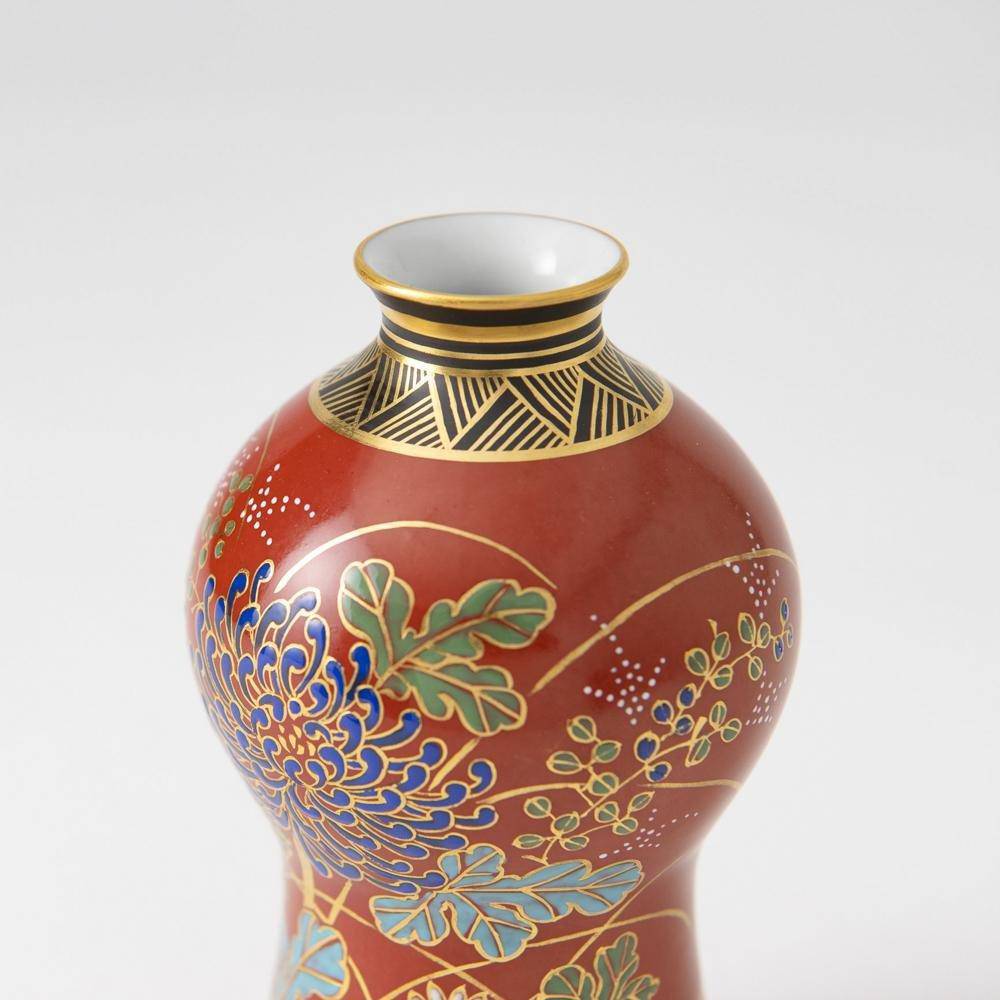

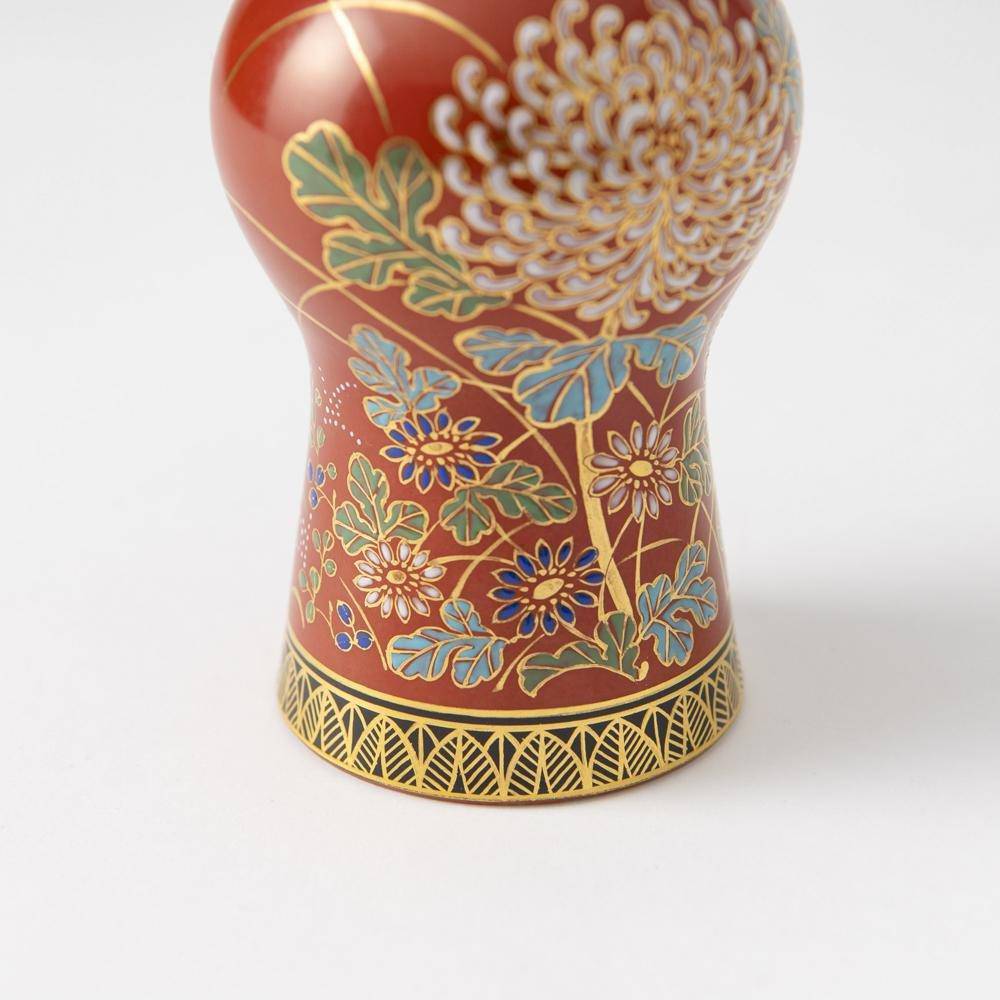
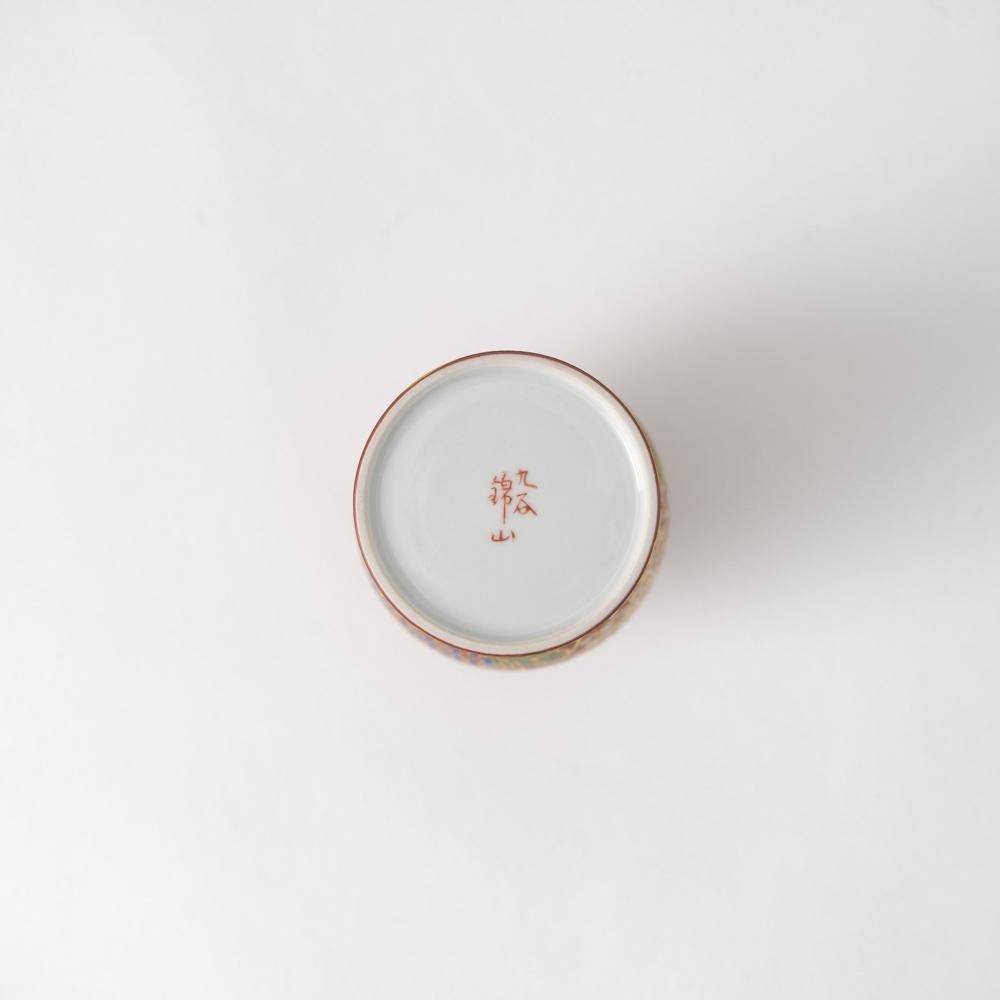


Red Gilded Chrysanthemum Gourd Sake Carafe
Estimated Shipping Widget will be displayed here!
This exceptional piece of art, Kinzan Kiln's Japanese Sake carafe, has a wonderfully gorgeous pattern of chrysanthemums painted in gold and various colors on a red background.
It is handcrafted by Kinzan Kiln, especially excels in Kinsai, one of the famous Kutani ware's glazing technique with a gold leaf.
This "Shugu" series, created by focusing on the modern and sophisticated shape and pattern derived from the old Kinzan kiln's collections and techniques, has elegant and timeless charms.
In addition to poring Sake, it can also be used as an interior decoration or as a small vase for flowers.
It is perfect for celebrating special occasions and also as a special gift for your loved one and yourself.
DETAILS
| Quantity | 1 Sake Carafe |
| Size | 7.5 cm (2.75 in) x H 13 cm (5.11 in) |
| Capacity | 225 ml (7.6 fl oz) |
| Material | Porcelain |
| Microwave | No |
| Dishwasher | No |
Maker / Brand
Kinzan kiln was established in 1906 and has continued to produce Kutani ware for about 110 years. Among the traditional techniques of Kutani ware, the Kiln especially excels in Kinsai, glaze painting with gold. In addition to the traditional techniques and innovative trials by artists, Kinzan kiln continues to create a new world of colorful Kutani ware by exploring various techniques and materials.
Crafts
Kutani ware is a pottery produced in the Kaga region of Ishikawa Prefecture and it has a history of over 350 years. It is characterized by the heavy brilliance of the five colors of green, yellow, red, purple, and navy blue that are applied to the bold and daring lines. Its long history has evolved through the tireless efforts and enthusiasm of people who have sought innovation while maintaining tradition.
The beauty of the various styles and methods of painting is known as "Japan Kutani" and is highly regarded around the world.
Choose options
















Estimated Shipping Widget will be displayed here!
Sake Carafes
We have collected wonderful sake carafes (sake bottles) from all over Japan that will enrich your blissful moments of savoring your favorite sake.
The standard size of a sake carafe is 180–360 ml (6–12 fl oz). For those who prefer to drink in larger quantities or often share with groups of more than two, we recommend choosing a larger size.
Explore our exquisite range of sake carafes, crafted from a variety of materials, including elegant metalware and inviting stoneware. Pair your favorite sake carafe with sake cups of your choice to create your very own sake set and elevate your drinking experience to new heights.
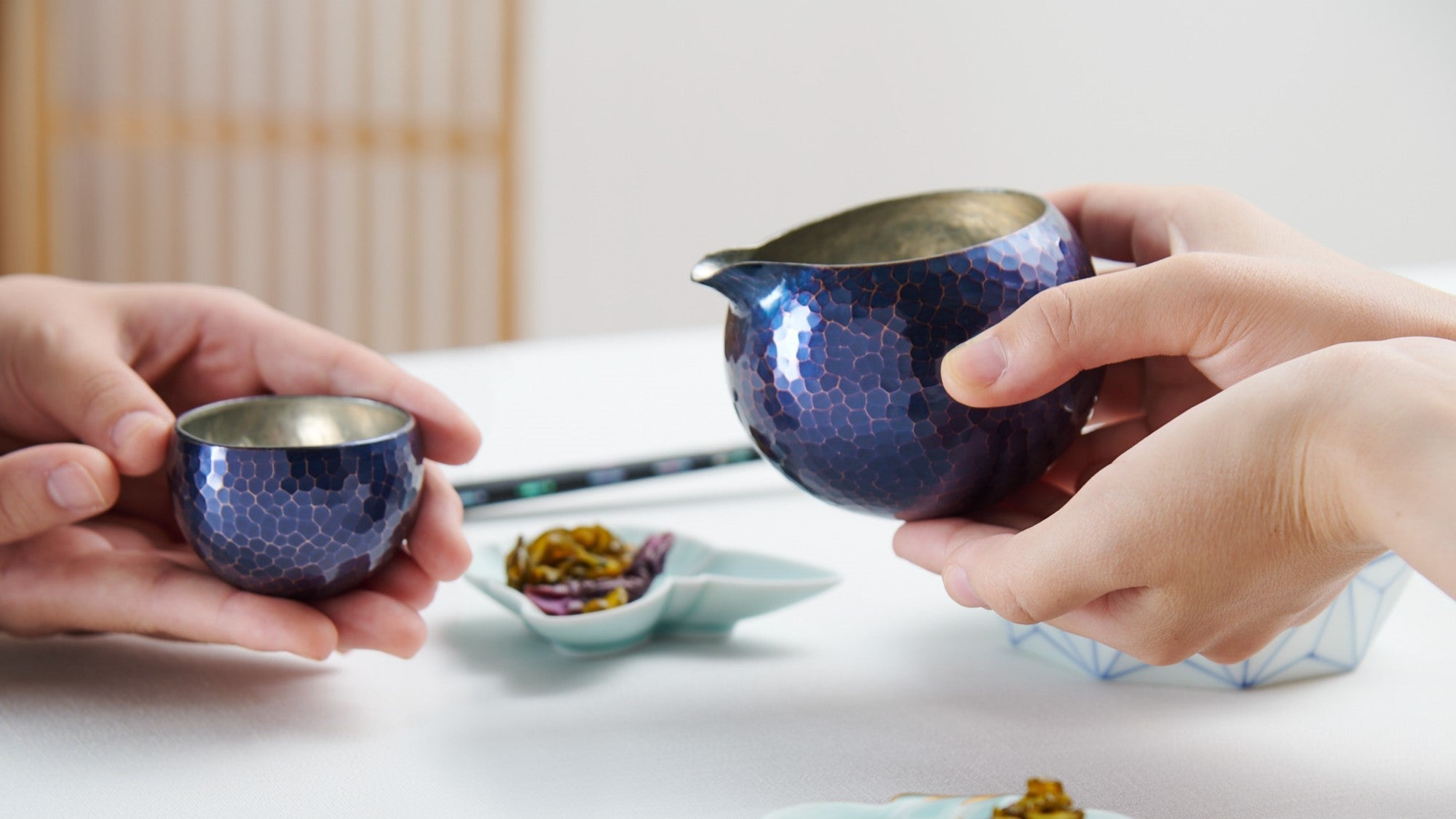
Kinsai
Kinsai refers to techniques used to apply gold leaf or gold paint to ceramics. Both terms also refer to the works produced by these techniques. Gold leaf or paint is applied over the ceramics’ glaze or overglaze decoration and then fired at a lower temperature than the overglaze itself.
Gold leaf and gold paint are valuable materials. In addition, gold leaf is very thin and particularly difficult to handle. Works flawlessly decorated with these materials reveal the extraordinary skill of the artisan.

Guide to Japanese Sake Items

The Japanese World of Gold

Elegant Sushi Dining: The Lacquerware Jubako Box Experience

Authentic Sushi Set with Red Camellia Plate



